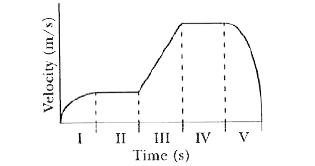A
B
C
D
Text Solution
Verified by Experts
The correct Answer is:
Topper's Solved these Questions
FORCE AND MOTION - I
RESNICK AND HALLIDAY|Exercise PRACTICE QUESTIONS (Matrix-Match)|7 VideosFORCE AND MOTION - I
RESNICK AND HALLIDAY|Exercise PRACTICE QUESTIONS (Integer Type)|3 VideosFORCE AND MOTION - I
RESNICK AND HALLIDAY|Exercise PRACTICE QUESTIONS (More than One Correct Choice Type)|5 VideosFLUIDS
RESNICK AND HALLIDAY|Exercise PRACTICE QUESTIONS (Integer Type )|5 VideosFORCE AND MOTION-II
RESNICK AND HALLIDAY|Exercise PRACTICE QUESTIONS (Integer Type)|1 Videos
Similar Questions
Explore conceptually related problems
RESNICK AND HALLIDAY-FORCE AND MOTION - I -PRACTICE QUESTIONS (Linked Comprehension)
- A 2.0 kg object moves in a straight line on a horizontal frictionless ...
Text Solution
|
- A 2.0 kg object moves in a straight line on a horizontal frictionless ...
Text Solution
|
- A 2.0 kg object moves in a straight line on a horizontal frictionless ...
Text Solution
|
- A 70.0 kg astronaut pushes to the left on a spacecraft with a force ve...
Text Solution
|
- A 70.0 kg astronaut pushes to the left on a spacecraft with a force ve...
Text Solution
|
- A 10 kg block is connected to a 40 kg block as shown in the figure. Th...
Text Solution
|
- A 10 kg block is connected to a 40 kg block as shown in the figure. Th...
Text Solution
|
- A rope holds a 10 kg rock at rest on a frictionless inclined plane as ...
Text Solution
|
- A rope holds a 10 kg rock at rest on a frictionless inclined plane as ...
Text Solution
|
- A rope holds a 10 kg rock at rest on a frictionless inclined plane as ...
Text Solution
|
